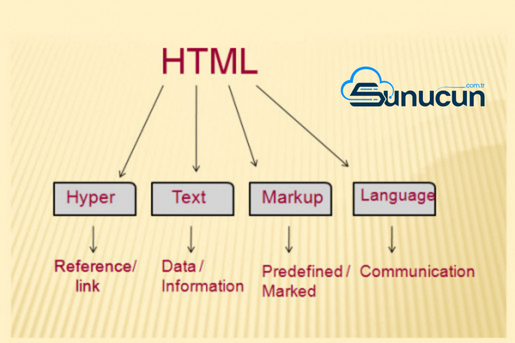What is HTML? What is it Used For? – The Foundation of Web Development
The question What is HTML? is one that everyone entering the world of the web encounters. HTML stands for “HyperText Markup Language” and is the fundamental language used to create websites. Nearly every web page on the internet is structured using this language. HTML allows users to visually view websites through web browsers. So, what exactly is HTML, and what is it used for? In this article, we will explore HTML in detail.
What is HTML? – A Basic Definition
HTML is not a programming language but a markup language. HTML is used to build the structure of web pages and instruct browsers on how to display the content of a web page. HTML consists of various markers called tags that define the text, images, links, and other media types on a page. These tags indicate to the browser how to structure and layout the content.
HTML allows users to visually view websites through web browsers. So, what exactly is HTML, and what is it used for? This article will examine it in detail.

What is HTML Used For?
HTML’s primary function is to create the basic structure of web pages. HTML code is read by the browser and then rendered on the screen. Here are some key uses of HTML:
- Creating Page Structure: HTML is used to define the headings, paragraphs, lists, tables, and other content types on a web page.
- Embedding Images and Media Files: HTML is used to add images, videos, and audio files to a page.
- Adding Links: HTML enables the creation of links for navigation between websites or within a page.
- Creating Forms: HTML allows users to create forms for inputting data.
- SEO Optimization: HTML helps optimize web pages for better rankings in search engines by structuring page titles, meta descriptions, and other elements.
History and Evolution of HTML
The origins of HTML date back to 1991 when Tim Berners-Lee developed the first version. Since then, HTML has continuously evolved and been updated. Today, the most widely used version is HTML5. HTML5 offers far more features than previous versions and supports modern web standards.
Main Components of HTML
HTML consists of various tags that define the structure of a web page. Below are some of the key components of HTML:
- HTML Tags: Special markers used to define the content of a web page. Each tag generally has an opening and a closing tag. For example, the
<p>tag is used to define a paragraph. - HTML Headings: Tags used to create headings on web pages. Heading tags range from
<h1>to<h6>, providing a hierarchical structure. - HTML Lists: Ordered (ordered) and unordered lists are created using the
<ol>and<ul>tags, respectively. - Links: Links to other pages or content are defined with the
<a>tag. - Images: The
<img>tag is used to add images to web pages, specifying the source of the image.
HTML and SEO Relationship
Proper use of HTML is crucial for a website’s success in search engine rankings. Search engines pay close attention to the HTML tags and structure when crawling a page. Here are some ways HTML affects SEO:
- Title Tags: The
<title>tag defines the page’s title, which appears in search engine results. A good title tag includes keywords and is compelling. - Meta Descriptions: The
<meta description>tag provides a short summary of the page for search engines. This description should be optimized to increase click-through rates. - Heading Tags (H1-H6): Heading tags define the hierarchy of content on the page. The
<h1>tag defines the main heading and is crucial for SEO. - Alt Text: The alt text within the
<img>tag helps search engines understand the images, improving image SEO.
Conclusion – Why is HTML Important?
HTML is the backbone of the internet. This language forms the building blocks of websites and is simple enough for anyone to learn. HTML not only determines the structure of web pages but also plays a critical role in SEO optimization, user experience, and accessibility. As the internet evolves, HTML has also advanced and remains an integral part of modern web technologies.




